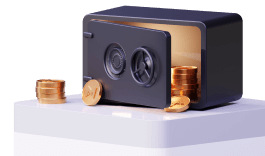Cautious optimism prevails…
Market sentiment remains slightly positive early Monday, supported by easing geopolitical concerns over Gaza and fresh hopes that U.S. policymakers will work to prevent a government shutdown this week. Additionally, news from Japan’s Prime Minister elections has reduced concerns about a Bank of Japan (BoJ) rate hike, and Trump's likely easing of auto tariffs, along with plans to offer $1,000-$2,000 relief to taxpayers, added to a firmer risk appetite. The U.S. Dollar also started the week stronger after a downbeat previous week, despite dovish Federal Reserve (Fed) bets continuing.
On Friday, the ISM Services Purchasing Managers’ Index (PMI) for September dropped to a four-month low of 50.00, below the expected 51.7, and down from 52.0 in the previous month. However, the details indicated improvements in the inflation and employment components. Meanwhile, the final U.S. S&P Global Composite PMI for September rose to 53.9, surpassing the initial forecast of 53.6, supported by a better-than-expected Services PMI.
Markets didn’t have the U.S. non-farm payrolls report to digest on Friday, but signs of a weakening job market remain evident, as job postings from Indeed have been trending lower. Although this index only has a five-year history, its recent decline suggests a broader trend of slowing hiring, raising questions about whether a low-hiring/low-firing economy can be sustained or if it signals layoffs ahead.
Fed officials continue to weigh in on inflation. Fed Governor Stephen Miran expects significant disinflation in services inflation, while Federal Reserve Vice Chair Philip Jefferson anticipates a resumption of disinflation next year. Further, Dallas Fed President Lorie Logan noted risks that the effects of tariffs may be more prolonged than expected, and Chicago Fed President Austan Goolsbee mentioned that both inflation and employment are showing signs of deterioration.
Meanwhile, Trump is considering significant tariff relief for U.S. auto production and is urging Fannie Mae and Freddie Mac to support large homebuilders.
In trade news, Beijing has proposed a trillion-dollar investment to ease U.S. curbs on Chinese investments, signaling a shift from previous trade deals focused on U.S. export purchases. China is also urging the Trump administration to ease national security limits on Chinese investments in the U.S. and to reduce tariffs on materials used by Chinese-owned factories operating in the U.S.
Meanwhile, a Wall Street Journal report revealed that China has secretly paid Iran for oil through an $8 billion conduit to bypass U.S. sanctions, funding Chinese-led construction in Iran.
President Trump posted on Truth Social, giving Hamas until 6 PM Sunday to reach an agreement on Gaza. He warned that if the deadline passed without a deal, “all HELL” would break out against Hamas. Hamas has reportedly handed over its response to Trump's Gaza plan, agreeing to engage in peace negotiations through mediators and to release all Israeli hostages.
In the Eurozone, ECB President Christine Lagarde stated that "we are in a good place" regarding interest rates.
Japanese Yen (JPY) was hit hard following the results of Japan’s Prime Minister election. Sanae Takaichi, who won the leadership race in Japan’s ruling Liberal Democratic Party (LDP), challenged the current Bank of Japan government-BOJ accord and signaled a return to “Abenomics,” which could mean more expansionary fiscal policies and potential tensions with the BoJ on rate hikes. As a result, the yen dropped significantly, marking its biggest loss in five months, while Japan’s Nikkei 225 soared to a record high.
In other news, Australia’s Melbourne Institute Inflation for September rose 0.4% month-on-month, up from -0.3% in the previous month, while New Zealand’s ANZ Commodity Price Index for September fell 1.1%, reversing the previous month's 0.7% gain. The New Zealand Institute of Economic Research (NZIER) has recommended that the Reserve Bank of New Zealand (RBNZ) continue its easing cycle, with most members favoring a 25-basis-point cut to the Official Cash Rate (OCR) at the upcoming October policy review.
Oil prices rose after OPEC+ agreed to modestly raise production by 137,000 barrels per day, easing concerns of a large supply increase. There were earlier reports that OPEC was considering a larger output hike, but the agreed increase was far smaller, helping to calm the market.
U.S. equities had a strong session on Friday, with the Dow Jones Industrial Average and the S&P 500 closing at record levels. The Nasdaq fell slightly after closing at a record high the previous day. Healthcare stocks posted their best week since June 2022, with the S&P healthcare sector up 6.82%. Information technology and utilities also saw strong gains. On the downside, energy, communication services, and consumer discretionary sectors faced declines. Notably, Jefferies downgraded Apple to "Underperform" from "Hold," citing overly high expectations for iPhone sales and the upcoming iPhone 18 Fold.
Trump also floated the idea of issuing another round of stimulus checks to boost the economy, potentially ranging from $1,000 to $2,000 per taxpayer. While the U.S. economy is not widely seen as struggling, Trump's proposal gained attention, giving a boost to cryptocurrencies.
The rise of corporate bitcoin holdings, however, has raised alarm among bankers. As of now, 190 publicly listed companies hold over 1 million bitcoin, many financed through debt, which leaves them exposed if bitcoin prices collapse. This trend has sparked concerns about potential systemic risks within the digital asset sector.
Against this backdrop, the U.S. Dollar Index (DXY) starts the week on a positive note after a tough previous week. USDJPY caught attention with a gap-up opening, rising 2.0% intraday to 150.37, its highest level in nine weeks. Meanwhile, EURUSD and GBPUSD edged lower, AUDUSD remains under pressure, and NZDUSD ended a six-day winning streak. USDCAD picked up bids to reverse its previous day’s loss. Crude Oil rose over 1.50%, while Gold hit a new all-time high near $3,945. Bitcoin (BTC) also reached its all-time high the previous day but traded sideways early Monday, while Ethereum (ETH) showed limited movement.
EURUSD, GBPUSD consolidate gains
The U.S. Dollar’s corrective bounce put pressure on EURUSD and GBPUSD buyers, following an upbeat week, as traders prepare for a busy week ahead with key data and events. Meanwhile, cautious remarks from ECB President Christine Lagarde, defending the current monetary policy while sounding wary, along with rising concerns about the UK’s upcoming budget and recent disappointing economic data, also weigh on EUR and GBP buyers.
USDJPY rallies on BoJ concerns
USDJPY began the week with solid gains, up nearly 2.0% intraday by press time, as it extends the week-start gap-up. The reason could be linked to the victory of Sanae Takaichi, who won the leadership race in Japan’s ruling Liberal Democratic Party (LDP), to become the first female leader of an Asian major party. Takaichi is a firm supporter of Shinzo Abe’s loose policies and fiscal reliefs. This raised doubts about the BoJ’s rate hikes and hence drowned the JPY, as well as fueled the risk-on mood in Tokyo, as well as helping the USD. With this, the USDJPY jumped to the highest level since early August.
AUDUSD, NZDUSD, and USDCAD ease
Despite the market’s cautious optimism and signals about China’s plan for U.S. investments, the AUDUSD, NZDUSD, and USDCAD failed to cheer the news. The reason could be linked to the golden week holidays in China and Beijing’s Iran crude oil purchases with a barter system to circumvent the U.S. sanctions. Also, hopes of the RBNZ’s rate cut, mixed Aussie inflation data, and downbeat Canada inflation also contributed to these pairs’ latest performances. Meanwhile, a recovery in crude oil prices, Canada’s key export, failed to favor the CAD amid dovish BoC bias and trade tensions surrounding Canada.
Gold renews ATH, Crude Oil jumps
Gold has once again reached a new all-time high, driven by market uncertainty surrounding the potential U.S. government shutdown, cautious optimism in China and Japan, and growing physical and investment demand from China and India as their buying seasons approach.
Meanwhile, a smaller-than-expected output cut from OPEC+ and doubts about whether even half of that reduction will materialize boosted WTI crude oil, pushing it up by more than 1.5% after a tough week.
Cryptocurrencies dribble after an upbeat day, equities edge higher
Bitcoin (BTC) reached a new all-time high on Sunday but lacked further upside momentum early Monday. Meanwhile, Asia-Pacific equities edged higher, led by Japan, following Wall Street’s strong performance. Notably, both the Dow and S&P 500 hit record highs on Friday, driven by positive industry news, easing concerns over a U.S. government shutdown, and Trump’s willingness to ease auto tariffs and offer tax incentives to taxpayers using funds from tariff revenues.
Latest moves of key assets
- WTI crude oil bounces off a four-month low, up 1.65% around $61.70 as we write.
- Gold refreshes all-time high (ATH) near $3,945 at the latest.
- The US Dollar Index (DXY) rises half a percent to 98.15 by press time.
- Wall Street closed on the positive side, after a mixed start, with Dow Jones and S&P 500 reaching ATH. That said, the Asia-Pacific stocks trade mildly bid, whereas equities in Europe and Britain lack clear direction during the initial trading hours.
- Bitcoin remains sidelined around $124,000 after hitting an ATH past $125K the previous day, Ethereum stays slightly positive near $4,425, after hitting a two-week top.
A busy day ahead…
Kansas City Fed President Jeff Schmid is scheduled to speak on the economic outlook and monetary policy on Monday, while European Central Bank (ECB) President Christine Lagarde, ECB Vice President Luis de Guindos, and ECB Chief Economist Philip Lane will also provide insights into the Eurozone’s monetary policy outlook. Additionally, Bank of England (BoE) Governor Andrew Bailey is set to deliver a speech. In Canada, former Bank of England Governor Mark Carney is due for a working visit to Washington on Tuesday.
Meanwhile, concerns about U.S. policymakers’ ability to resolve the government shutdown, along with dovish Federal Reserve bets, could prompt U.S. Dollar sellers, potentially testing USDJPY buyers. However, ongoing risks surrounding Gaza, Trump’s tariff policies, and tensions with China and Russia might help the U.S. Dollar defend its recent rebound.
Predictions for top-tier assets
- Bullish Move Expected: USDCAD, USDJPY
- Further Downside Likely: USDCHF, Gold
- Sideways Movement Anticipated: Nasdaq, DJI30, USDCNH, AUDUSD, NZDUSD, GBPUSD, US Dollar, BTCUSD, ETHUSD, Crude Oil
- Slow & Gradual Fall Eyed: DAX, FTSE 100, EURUSD




